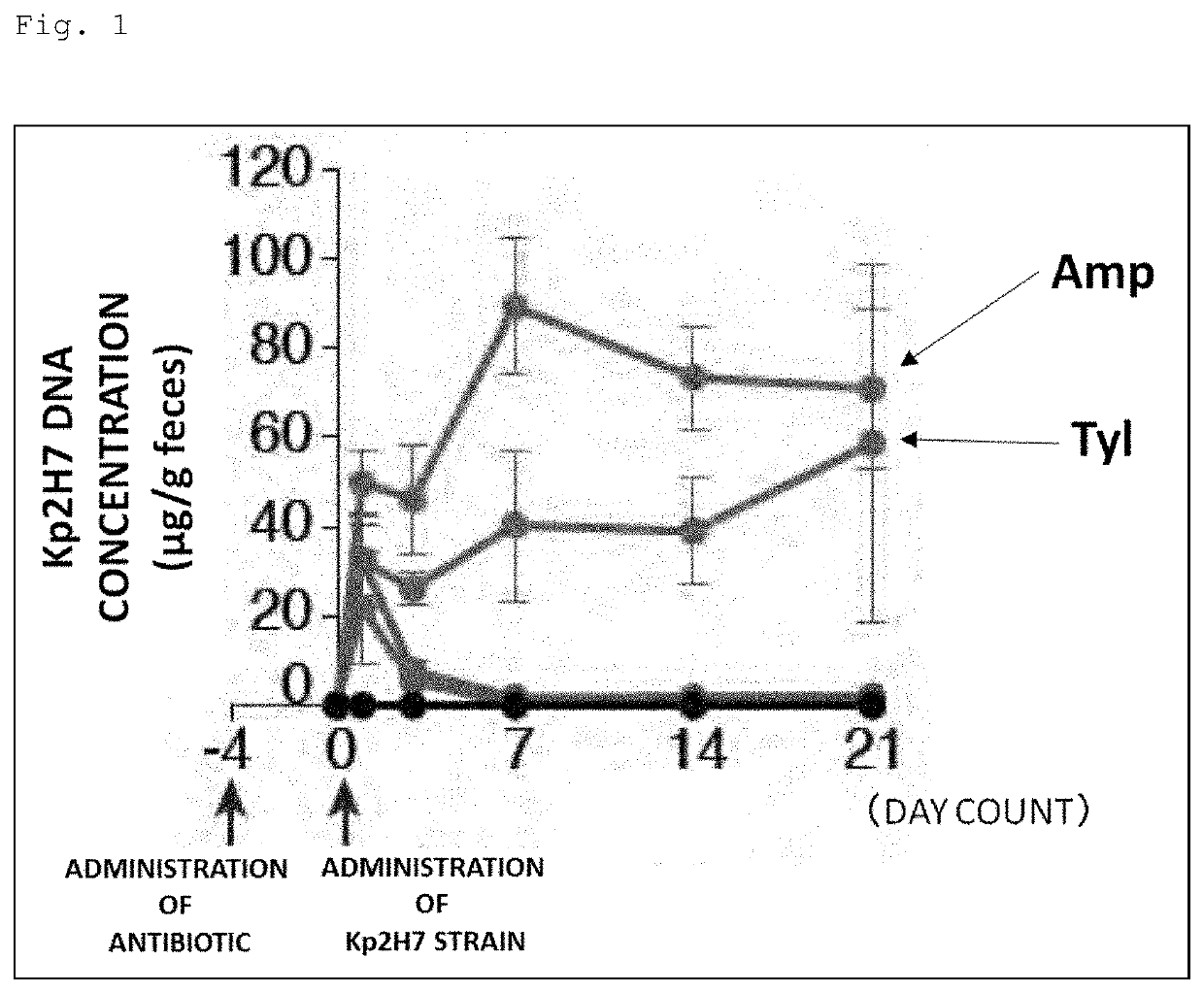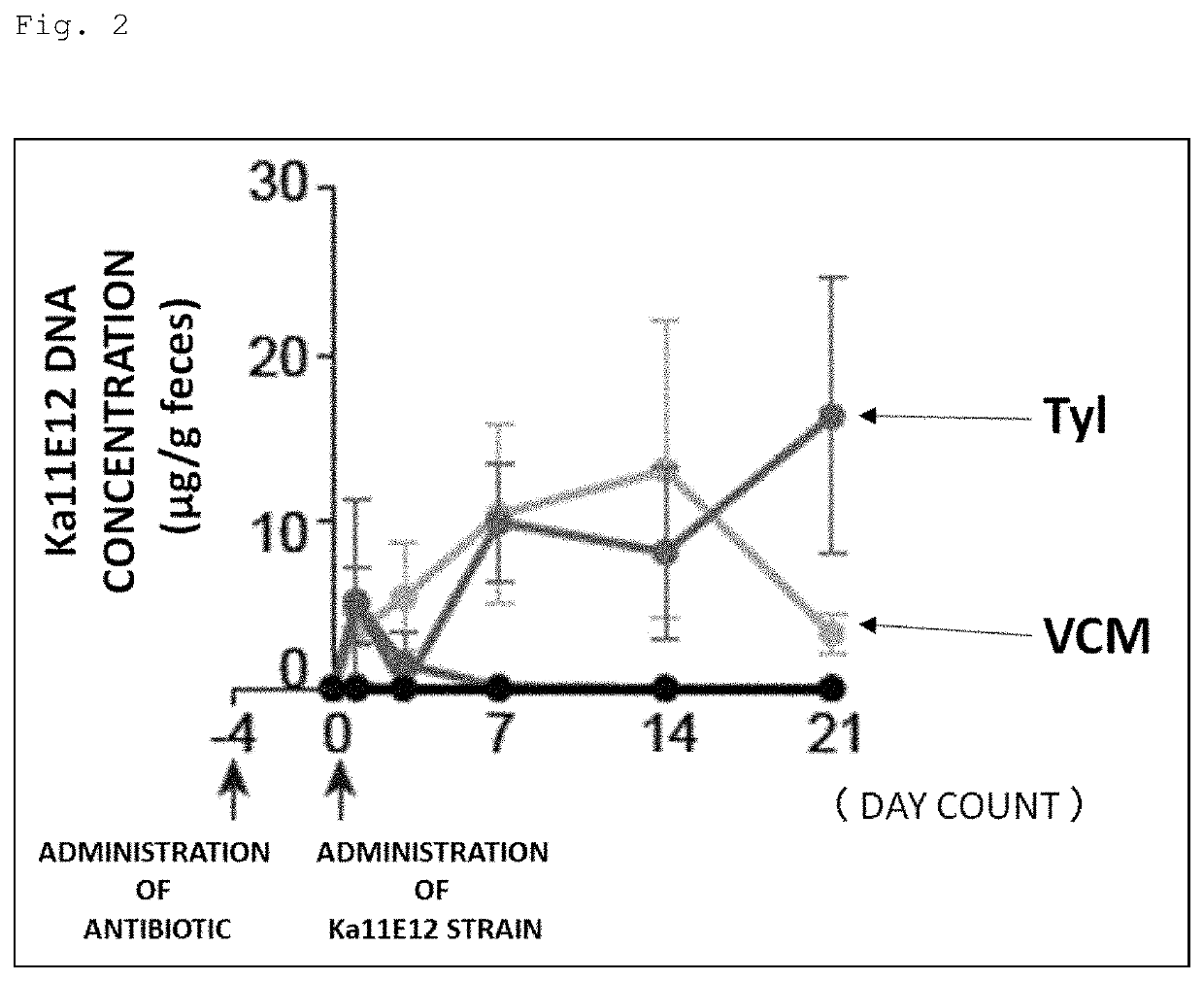Anti-bacterial composition against th1 cell-inducing bacteria
a technology of antibacterial composition and cell-inducing bacteria, which is applied in the field of antibacterial composition against th1 cell-inducing bacteria, can solve the problems of unrevealed detail of the mechanism, and achieve the effects of suppressing th1 cell proliferation or activation, suppressing intestinal immunity, and preventing diseas
- Summary
- Abstract
- Description
- Claims
- Application Information
AI Technical Summary
Benefits of technology
Problems solved by technology
Method used
Image
Examples
example 1
[0147]
[0148]Prior to gavage of Th1 cell-inducible bacteria, the following antibiotics were administered to SPF mice (wild type C57BL / 6) through the drinking water for 4 days. Moreover, mice without these antibiotics administered were also prepared.
[0149]Antibiotics: ampicillin (200 mg / L), tylosin (500 mg / L), metronidazole (500 mg / L), spectinomycin (200 mg / L), vancomycin (200 mg / L).
[0150]The Kp2H7 strain or the Ka11E12 strain, which is a Th1 cell-inducible bacterium, was cultured to log phase in LB broth, and 1 to 2×108 CFUs were used to inoculate the mice.
[0151]Feces were collected 1, 3, 7, 14, and 21 days after the gavage of Th1 cell-inducible bacteria, and DNAs were extracted therefrom. Then, these DNAs were used as templates to perform qPCR using the following primers specific to each bacterial strain, thereby evaluating the intestinal colonization level of each bacterial strain.
[SEQ ID NO: 148]Kleb-(ompK36-3_F: 5'-GCGACCAGACCTACATGCGT-3',siella[SEQ ID NO: 149]ompK36-3_R: 5'-AGTC...
example 2
[0160]
[0161]As shown in FIG. 3, germ-free mice were inoculated with the Kp2H7 strain in the same manner as in Example 1. Then, one week after the inoculation, a human fecal sample collected from a healthy individual (# K) was orally administered. In addition, during the period of 31 to 94 days after the oral administration, ampicillin was continuously administered in the same manner as in Example 1 (hereinafter, the mice thus treated is also referred to as the “controls”).
[0162]In addition, germ-free mice were treated in the same manner as for the control except for orally administering the sample treated with chloroform at a final concentration of 3% instead of the human fecal sample (hereinafter, the mice thus treated are also referred to as the “chloroform treated group”).
[0163]Moreover, germ-free mice were treated in the same manner as for the control except that metronidazole was continuously administered in the same manner as in Example 1 from one day before oral administratio...
example 3
[0166]
[0167]Preparation of Fecal Sample
[0168]Feces (# K fecal sample, # F fecal sample, and # I fecal sample) provided from healthy volunteers (# K, F, and I) were diluted 5 times by weight with a glycerol PBS solution (final concentration of glycerol: 20% by volume) and filtered through a 100 μm-diameter filter, and the resultant was stored at −80° C. as a stock solution. Note that the healthy volunteer # K in the present example and the healthy individual # K in Example 2 are the same person.
[0169]Preparation of Kp2H7 Single-Bacterium-Colonized Mice
[0170]C57BL / 6N Jcl gnotobiotic mice (manufactured by CLEA Japan, Inc., 4 to 8 weeks of age) were bred in a breeding vinyl isolator (sterile isolator) (manufactured by ICM Inc.; ICM-1B) for 1 week or more under free drinking and feeding conditions to acclimatize to the environment.
[0171]The Kp2H7 strain was cultured in a Schaedler blood medium, an LB medium, or an agar plate thereof in an anaerobic environment at 37° C. and 10% CO2. A su...
PUM
 Login to View More
Login to View More Abstract
Description
Claims
Application Information
 Login to View More
Login to View More - R&D
- Intellectual Property
- Life Sciences
- Materials
- Tech Scout
- Unparalleled Data Quality
- Higher Quality Content
- 60% Fewer Hallucinations
Browse by: Latest US Patents, China's latest patents, Technical Efficacy Thesaurus, Application Domain, Technology Topic, Popular Technical Reports.
© 2025 PatSnap. All rights reserved.Legal|Privacy policy|Modern Slavery Act Transparency Statement|Sitemap|About US| Contact US: help@patsnap.com



